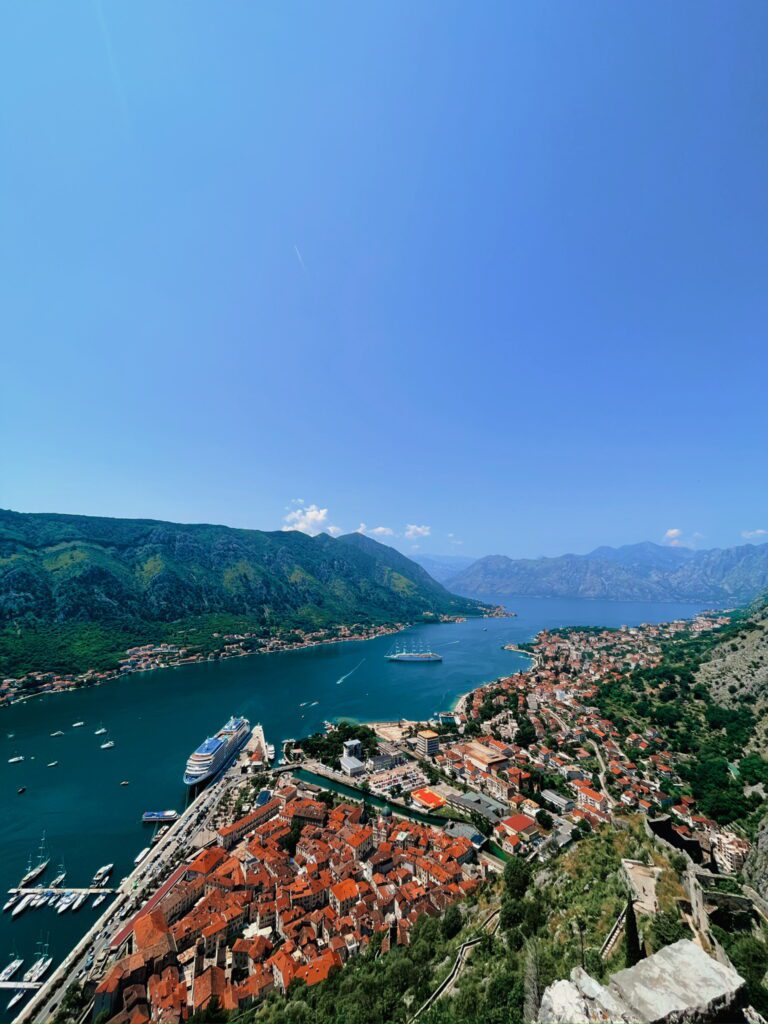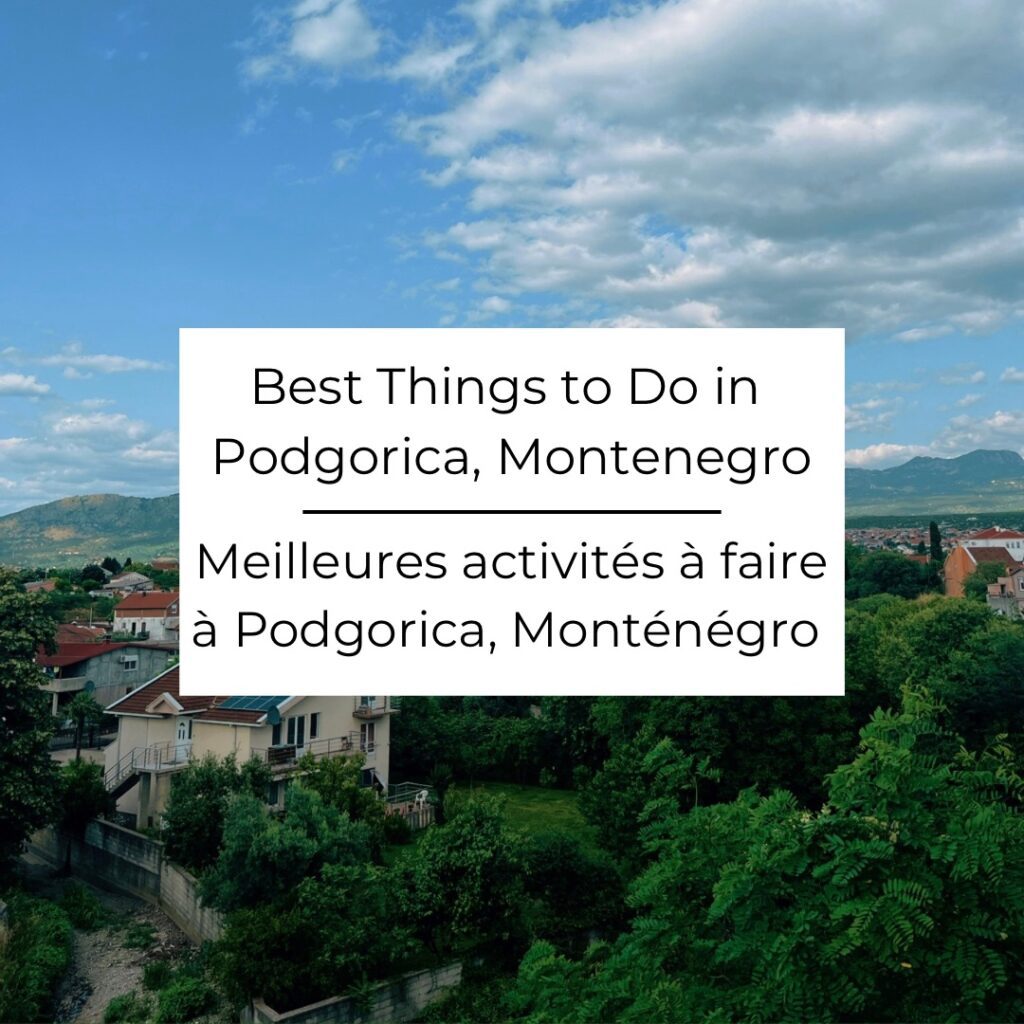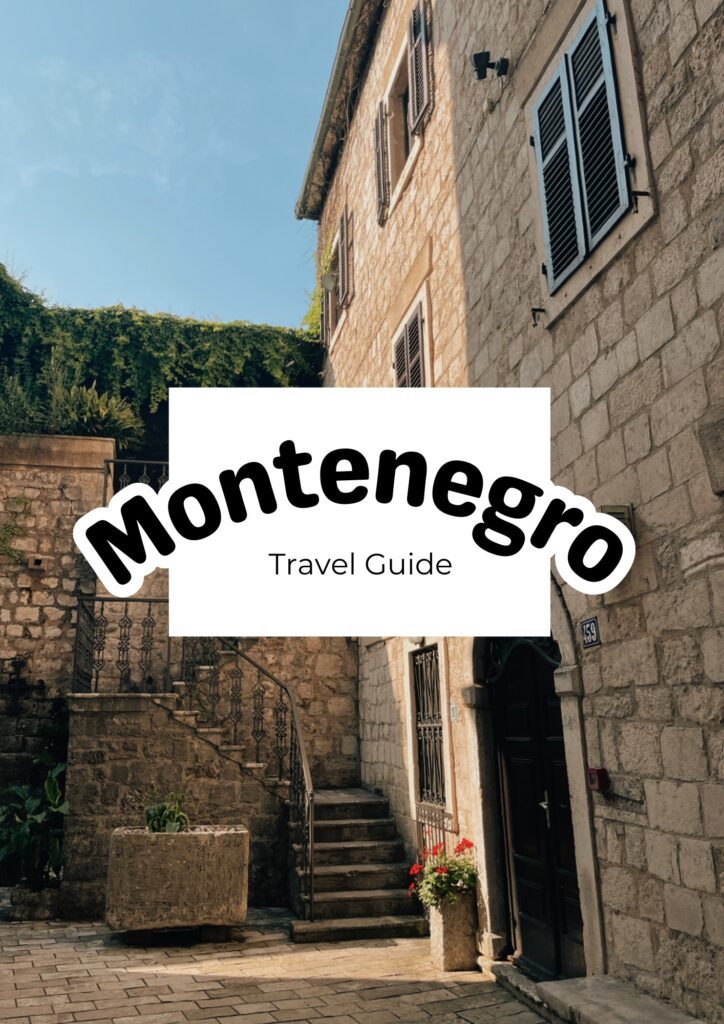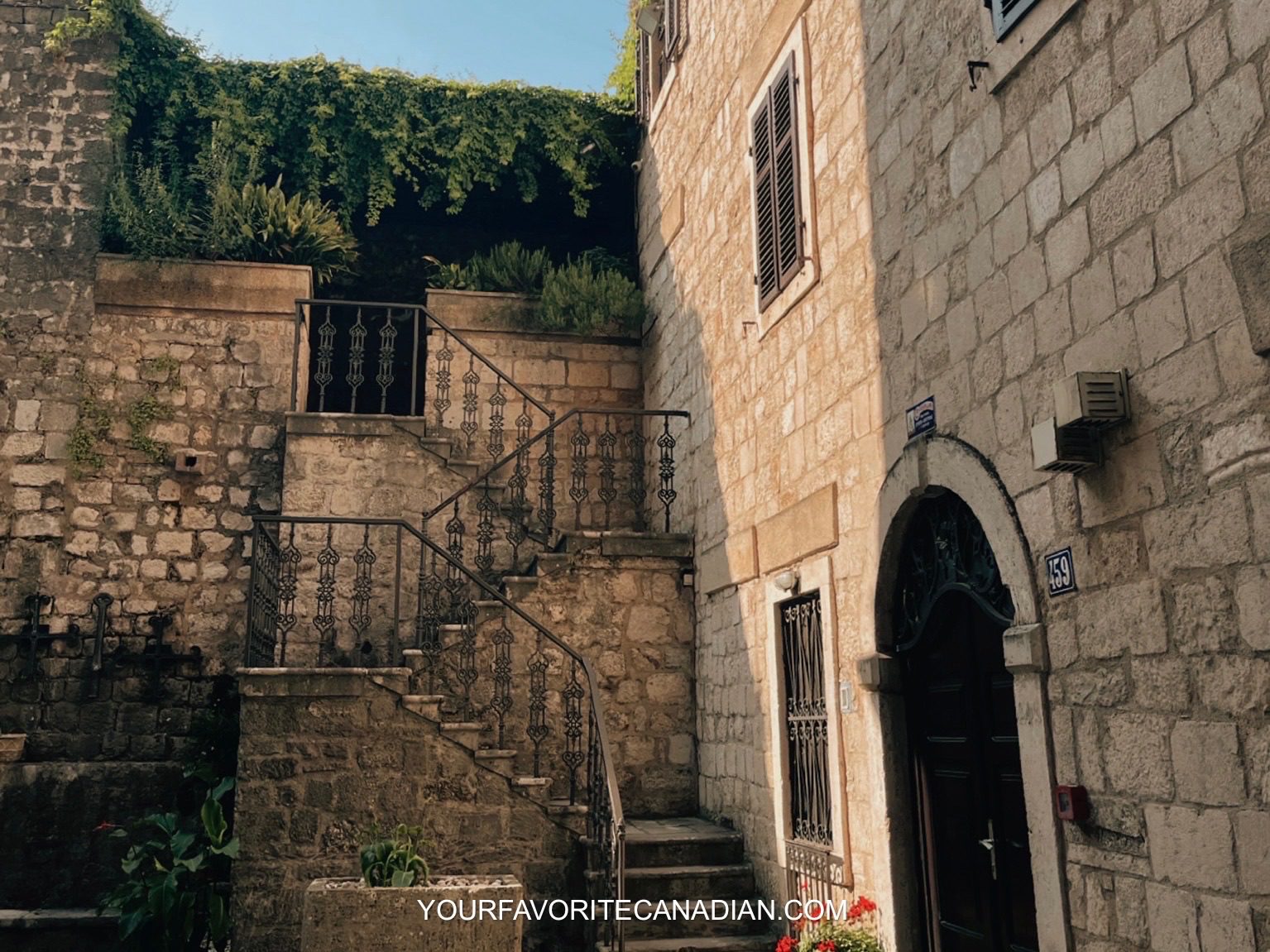Montenegro is a small yet breathtaking Balkan country that often flies under the radar, even though it offers stunning coastal towns, crystal-clear waters, and mountainous landscapes. Although it is among the top three smallest countries in the Balkans, its beauty is unparalleled. Whether you’re exploring its UNESCO-listed Bay of Kotor, hiking in Durmitor National Park, or relaxing by the Adriatic Sea, Montenegro promises an unforgettable travel experience. Let’s dive into everything you need to know to plan your perfect Montenegro trip:
- Best Time to Visit: Climate, Crowds & Prices
- Local Culture & Etiquette: Cultural Norms, Language, Etiquette – Visiting Religious Sites
- Money Currency & Payments
- Accommodation Options: Types of Accommodations, Recommendations, Essential Apps
- Local Cuisine: Meal Times
- Transportation: Renting a Car, Traveling Between Cities with Luggage, Essential Apps
- Safety & Health: Tap Water Conditions, Health Precautions, Emergency Informations, Safety Tips
- Visa Requirements
- Staying Connected: Getting a SIM Card in Montenegro
- Top Attractions & Activities
1
Best Time to Visit
The best time to visit Montenegro depends on what you want for your trip :
Climate
Montenegro has a Mediterranean climate along its coast, with mild winters and warm summers, while the inland areas experience a continental climate, with colder winters and hotter summers. The best time to visit depends on what you are looking for, but the summer months from June to September are the most popular. I personally visited in June, and the weather was perfect for beach days and water activities without the intense heat of high summer.
Crowds and Prices
During the summer, you’ll find moderate crowds, especially in coastal areas like Kotor and Budva, but they are far less overwhelming compared to other popular European beach destinations. Accommodations tend to be reasonably priced, even during high season, with hostel stays averaging around €17-25 (25-40$ CAD) per night. Off-season, from October to May, is ideal if you prefer fewer tourists, and accommodation prices drop significantly.
2
Local Culture & Etiquette
Montenegro’s culture plays a significant role in everyday life. Here are three key aspects to keep in mind: cultural norms, language, and etiquette. Understanding and respecting these customs will enhance your travel experience and your interactions with the local community.
Cultural Norms
Montenegro has a laid-back and friendly atmosphere. While the country is modern and open-minded, the culture is rooted in traditional Balkan hospitality. The Montenegrins are known for their welcoming nature and strong sense of national pride. Sunday is a day of rest for many locals, and some shops and restaurants might have reduced hours, especially in smaller towns.
Language
The official language is Montenegrin, but Serbian, Croatian, and Bosnian are also widely spoken. English is commonly understood in tourist areas, but learning a few basic Montenegrin phrases like “Dobar dan” (Good day) and “Hvala” (Thank you) will be appreciated by locals.
Etiquette – Visiting Religious Sites
When visiting religious sites, it’s important to dress modestly. Covering your shoulders and knees is a sign of respect, especially in churches and monasteries. Montenegrins value politeness in both casual and formal settings.
3
Money Currency & Payments
When traveling to Montenegro, understanding the local currency and payment methods is essential for a smooth experience. Here’s everything you need to know about managing money during your stay.
The Euro (€): The Local Currency
Montenegro uses the Euro (€), despite not being part of the European Union or the Eurozone. Banknotes come in denominations ranging from 5€ to 500€, while coins range from 1 cent to 2€. Coins are frequently used, especially for small transactions like public transportation or using public bathrooms.
Exchange Rates
Exchange rates fluctuate regularly, so it’s important to check the current rate before you travel. As a general reference, 1€ is approximately equivalent to $1.50 CAD or $1.10 USD.
Currency Exchange
When exchanging money, it’s best to use official exchange counters or banks. However, it’s more cost-effective to exchange currency at your local bank before leaving home. ATMs in Montenegro often charge withdrawal fees, so if you must use them, make sure the machine displays your card’s logo and decline the ATM’s currency conversion rate—your home bank will likely offer a better exchange rate.
ATM Withdrawal Limits
ATMs in Montenegro often have withdrawal limits per transaction, typically between 250€ and 1000€ (approximately $390–1500 CAD). If you need to withdraw more cash, you can often make multiple withdrawals, but be mindful that each transaction incurs fees.
ATM Fees
Your home bank may charge a fee for international withdrawals, and the local Montenegrin bank operating the ATM will also charge a fee. To minimize costs, try to withdraw larger amounts of cash at once rather than making frequent smaller withdrawals. It’s a good idea to contact your bank before your trip to understand any potential fees or limitations.
Security Tips for Using ATMs
When using ATMs, choose machines located inside banks, shopping centers, or other secure areas. Always be cautious of any unusual devices attached to the machine and cover the keypad when entering your PIN to prevent skimming or theft.
Card Payments, Minimum Spend & Transaction Fees
Visa and Mastercard are widely accepted across Montenegro, especially in larger cities and tourist areas. American Express and other cards are less commonly accepted, particularly in smaller shops or rural areas. Many places may have a minimum spend for card payments, so it’s always good to ask before purchasing. Contactless payments, like Apple Pay and Google Pay, are becoming increasingly common, especially in cities.
Before your trip, check with your bank about any foreign transaction fees associated with using your card abroad. These fees can add up quickly, so it’s important to know if your bank charges for international purchases.
Tipping Etiquette in Montenegro
Tipping in Montenegro is not mandatory, but it is appreciated for good service. Here’s a breakdown of tipping customs in Montenegro:
Restaurants and Cafés:
- Service Charge: Some restaurants may include a service charge in the bill, but this is not common. If included, it will usually be noted on the bill.
- Additional Tip: If no service charge is included or if the service was excellent, a small tip of 5-10% is appreciated but not expected.
- Cafés: Tipping at cafés is less common. You may leave a few coins if you receive table service, but it’s not necessary.
Hotels:
- Bellboys and Housekeeping: It is customary to tip bellboys €1-2 per bag. For housekeeping, leaving €1-2 per night is a considerate gesture, especially if you’re staying for several nights.
Other Services:
- Taxis: Rounding up to the nearest euro is standard, but no tip is required.
- Spa Treatments and Guided Tours: For spa treatments, tipping 5-10% is standard. For guided tours, a tip of €5-10 per person is generous, especially for private or small group tours.
Stay connected! Follow us on social media for exclusive content & updates on our travels.



On our website, you’ll find all the essential information and tips, while on our social media, you’ll get even more – including personal experiences, funny moments, stunning videos, and much more!
4
Accommodation Options
Choosing your accommodation can significantly impact your travel experience. To help you make the best decision, here’s a breakdown of the three main types of accommodations, with recommendations from our past trips and essential apps that will make booking these stays easier for you!
Types of Accommodations
- Villas: Renting a villa is by far the most visually stunning option, offering unique and original stays that can be truly memorable. Villas are usually equipped like apartments, complete with a kitchen and fridge, allowing you to prepare your own meals. While villas tend to be pricier, you can save money by cooking rather than dining out every day. This option is especially ideal for families or large groups, as splitting the cost can make it more affordable and enjoyable than staying in separate hotel rooms.
- Hotels: Hotels are a classic choice with a wide range of options to suit different budgets. Staying in a hotel offers you the comfort of daily housekeeping, room service, and access to various amenities that you won’t find in a villa, such as spas, yoga classes, and more. If you value security and convenience, hotels are a great option, especially for those who prefer having staff available around the clock to assist with any needs.
- Hostels: For backpackers and budget travelers, hostels are the most economical choice. While they may lack the luxury and comfort of villas or hotels, hostels offer a unique and social experience, perfect for young travelers. You’ll typically have a bed in a shared dormitory, making it an excellent way to meet new people, especially if you’re traveling solo. Many hostels also organize group activities to help guests connect. If you’re young and willing to trade a bit of comfort for a memorable and social experience, hostels are the way to go.
Recommendations
Here are some of my favorite places where I stayed during my trip to Montenegro:
- Podgorica: Q Podgorica, Beds, Rooms & More Hostel is a beautiful place with spacious rooms and a lovely outdoor area. The atmosphere is perfect for meeting new people. With a rating of 9.3 stars on HostelWorld, it’s definitely a great choice!
- Kotor: Montenegro Backpackers Home Kotor Hostel is situated right in the heart of the Old Town. It offers competitive prices, and with a rating of 9.3 stars on HostelWorld, I highly recommend staying here!
Essential Apps
- Booking.com: This app offers a wide range of accommodations, including hotels, hostels, and villas, all in one place.
- Airbnb: Perfect for finding unique and original villas or apartments that offer a home-like experience.
- Hostelworld: Specializing in hostels, this app features an excellent rating system to help you choose the best option. It also includes group chats where you can connect with others who will be staying at the same hostel.
Extra Recommendation: Once you’ve found a place you like, especially with hotels and hostels, be sure to visit their official website. Often, you can find exclusive discounts when booking directly through them.
5
Local Cuisine
Montenegrin cuisine is a mix of Balkan, Mediterranean, and Italian influences. Meals tend to be relaxed, with people taking their time to enjoy both the food and the company, and eating out is an affordable way to try local dishes. Here are some must-try Montenegrin dishes:
- Njeguški pršut: Thinly sliced smoked ham, typically served with cheese.
- Cevapi: Grilled skinless sausages made from a mix of meats, often served with flatbread.
- Burek: A flaky meat, cheese, or vegetable pie that is perfect for a quick and filling snack.
Meal Times
Lunch is typically eaten between 12 PM and 3 PM, while dinner starts late, around 8 PM or later, particularly in coastal towns.
6
Transportation
Getting around Montenegro is quite easy once you understand the best transportation options. To help you make the most of your trip, here’s a breakdown of the most convenient and cost-effective ways to travel around the country.
Renting a Car: The Best Way to Explore the Country
Renting a car is the most efficient way to explore off-the-beaten-path areas like Durmitor National Park or Lake Skadar. A car gives you the flexibility to travel between the coast and the mountainous interior at your own pace, without depending on public transportation schedules.
- Cost and Availability: Car rentals in Montenegro typically range from €25 to €50 (40-75$ CAD) per day, depending on the type of car, season, and location. Prices tend to be higher during the summer months due to demand. It’s advisable to book in advance, especially if you’re renting from major cities like Podgorica or Budva, where rental companies are more plentiful. For longer rentals, you may be able to negotiate a better rate.
- International Driver’s License: An international driver’s license is required to rent a car in Montenegro. Make sure to obtain one in your home country before your trip, as rental companies will not allow you to rent a car without it.
Traveling Between Cities with Luggage
If you’re traveling between cities in Montenegro and need to transport luggage, here are two great options:
- Bus Services: Buses are the most popular way to travel between cities and towns in Montenegro, with extensive routes connecting tourist destinations like Kotor, Budva, and Herceg Novi. Although buses take longer than trains due to multiple stops, they are budget-friendly and reliable. Prices range from €5 to €15 (8-25$ CAD) depending on the distance. Tickets can be booked online through apps like GetByBus or at local bus stations.
- Train Services: Montenegro’s train system is affordable but limited. Trains primarily run between Bar, Podgorica, Virpazar and Bijelo Polje, making this a good option if you’re traveling these routes. Tickets are easily available at stations, and prices vary depending on the distance, but train travel remains one of the most cost-effective ways to get around. For example, a ticket from Podgorica to Bar costs around €3-5 (5-10$ CAD).
Essential Travel Apps
- GetByBus and BusTicket4.me: These apps are essential for comparing bus transportation options within Montenegro. They show prices and schedules for different bus companies, helping you find the best deals.
- Google Maps and Maps.me: These are great for navigating both rural and urban areas, especially if you’re driving or walking in Montenegro’s more remote regions.
7
Safety & Health
Staying healthy during your time in Montenegro is crucial for making the most of your trip. Below are three things to consider: health precautions, including the tap water conditions, emergency information, and safety tips.
- Food and Water Safety: Tap water is safe to drink in most parts of Montenegro, particularly in cities and coastal areas. However, in more rural regions, it’s a good idea to check locally before drinking. Always ensure that food is thoroughly cooked and prepared under hygienic conditions to avoid foodborne illnesses. Stick to reputable restaurants and markets, especially when trying local cuisine.
- Sun Protection: Montenegro’s summer climate brings strong sun exposure, especially along the coast and during outdoor activities. Always wear sunscreen with a high SPF, and consider wearing a hat and sunglasses to protect yourself from sunburn and heatstroke. Stay hydrated by drinking plenty of water throughout the day, and avoid prolonged sun exposure during peak hours (11 AM to 3 PM).
- Vaccinations: Before traveling to Montenegro, ensure that your routine vaccinations, such as those for measles, mumps, rubella (MMR), and tetanus-diphtheria, are up to date. It’s also a good idea to consult with your doctor about additional vaccines, such as those for hepatitis A and B. Make sure to inform yourself in advance, as these vaccines can be expensive if not covered by insurance.
- Mosquito Protection: While Montenegro does not have a malaria risk, mosquitoes can still be a nuisance during the warmer months, especially near lakes and forests. Use insect repellent to avoid bites, particularly when exploring rural areas or spending time outdoors in the evening.
Emergency Information
Being prepared for emergencies is an essential part of travel safety. Here’s what you need to know about emergency services in Montenegro:
- Police: 122
- Ambulance: 124
- Fire Department: 123
- Tourist Assistance: 1300 (available in multiple languages)
Hospitals and Clinics: Montenegro has a well-established healthcare system with hospitals and clinics in most cities and towns. In major cities like Podgorica and Kotor, you will find hospitals with 24-hour emergency services equipped to handle a wide range of medical issues.
Pharmacies: Pharmacies (called “Apoteka”) are easy to find in both cities and smaller towns in Montenegro. They offer over-the-counter medications and basic medical supplies. If you need prescription medication, bring enough for your trip, as some medications may not be available locally. Pharmacies usually display a green cross sign and have specific hours, though some are open 24/7.
Language and Communication: Most medical professionals in Montenegro, particularly in tourist areas, speak some English. However, it’s advisable to carry your medical details translated into Montenegrin if you have specific health conditions or are taking prescription medications.
Safety Tips: Every traveler needs to be cautious, especially if you are solo traveling. We wrote an entire article giving you our best safety tips. Make sure to come back at the end of your reading to read our article 12 Essential Safety Tips for Solo Travelers.
8
Visa Requirements
When planning your trip to Montenegro, understanding the visa requirements is crucial to ensuring a smooth entry into the country. Here’s what Canadian citizens need to know:
Note: Visa requirements may vary depending on your nationality. If you’re not a Canadian citizen, make sure to check your government’s website for specific details.
Visa Requirements for Tourists and Business
Montenegro has its own visa policy, which is independent of the Schengen Area (since Montenegro is not a Schengen country). Canadian citizens do NOT need a visa for stays of up to 90 days within any 180-day period when visiting Montenegro. The time spent in Montenegro is separate from any time spent in Schengen countries. This applies to both tourist and business purposes.
- Tourist visa: Not required for stays of up to 90 days within a 180-day period.
- Business visa: Not required for stays of up to 90 days within a 180-day period.
Visa Required for Longer Stays or Specific Purposes
If you plan to work, study, or stay in Montenegro for more than 90 days, you will need to apply for a visa. Here’s how it breaks down:
- Work Visa: Required if you intend to work in Montenegro.
- Student Visa: Required if you’re studying for more than 90 days in Montenegro.
- Long-Stay Visa (for stays longer than 90 days): Required if you’re staying for purposes like family reunification.
Visa Duration
For stays exceeding 90 days, you will need to apply for a National Visa. The validity and duration of the visa depend on the purpose of your stay (work, study).
How to Obtain a Visa
To obtain the appropriate visa(s) before traveling to Montenegro, you must contact the Montenegrin Embassy or Consulate in your country. Make sure to start the application process well in advance of your travel dates.
Visa Costs
- National Visa (for stays longer than 90 days, study or work): Fees for a long-stay visa typically range from €50 to €100 ($75–$150 CAD), depending on the purpose of the visa.
Visa Extensions
You would need to apply for an extension through Montenegrin immigration. The extension must be applied for before your initial period expires. It’s recommended to start the extension process at least a month before your visa’s expiration date. Montenegrin immigration authorities may require proof of why the extension is needed.
9
Staying Connected
One of the most affordable and convenient ways to stay connected in Montenegro is by purchasing a local SIM card or an eSIM, rather than relying on an international phone package from your home country. Montenegrin SIM cards are widely available and provide excellent coverage throughout the country.
Where to Buy a SIM Card
While it’s possible to buy a SIM card directly at the airport upon arrival, it’s important to note that prices there tend to be significantly higher. A better option is to purchase one outside the airport. Convenience stores and official mobile carrier shops, such as Telenor, Telekom, and M, are popular among tourists and locals alike.
Prices can vary depending on the location and data package you choose, but you can generally expect to pay between €5–20 (8-30$ CAD) for 30 days of service.
What Are eSIMs?
If you prefer to have everything ready before you arrive, you can opt for an eSIM—a digital SIM card that doesn’t require a physical one. Companies like Holafly or Airalo offer these digital options. Simply download the plan to your phone, allowing you to skip the hassle of purchasing a physical card. While eSIMs are often slightly more expensive, they offer a high level of convenience.
Choosing the Right SIM Card
The cost of a SIM card will depend on the amount of data you need and where you purchase it. Most vendors offer various data packages, so consider your usage carefully. If you plan to use your phone primarily for navigation and occasional social media, a smaller package should be enough. However, if you plan to work remotely, stream content, or use data-intensive apps, you’ll need a larger data package.
Installation and Tips
When you purchase a SIM card, the vendor will typically install it for you and ensure that it’s functioning properly. Be sure to keep your original SIM card in a safe place, so you can easily switch back once you leave Montenegro.
If you’re uncertain about which provider to choose, ask the vendor for advice on which network offers the best coverage in the areas you plan to visit.
10
Top Attractions & Activities
Whether you’re seeking nature, adventure, or relaxation, Montenegro offers something for every type of traveler. Its rich culture, stunning landscapes, and warm hospitality make it a destination worth adding to your travel list. Here are three must-see attractions:



Now that you know everything there is to know about Montenegro, it’s time to plan your trip! Here are some articles that could be helpful :



Don’t want to miss out on our latest articles? Be sure to subscribe to our website, and you’ll receive a notification every time we publish something new!
Like this post? Pin it for later!

